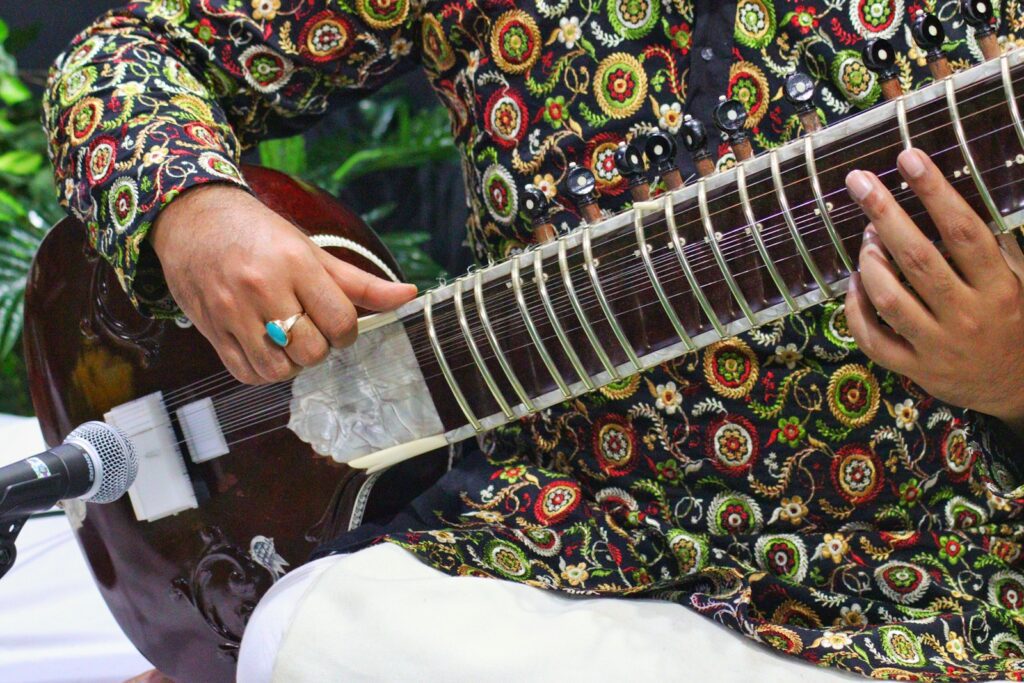
Can 1st performance of a musical work, make someone the authors of the musical work?
On 24 Sep 2025, the Delhi High Court dealt with the very question in an commercial appeal filed by A.R. Rahman against the order of the Single Bench in an infringement suit filed against him and other defendants by Ustad Faiyaz Wasifuddin Dagar, the lawful successor of the Junior Dagar Brothers.
Backstory:
The dispute arose with the release of the song “Veera Raj Veera” in 2023 for the movie Ponniyin Selvan Part – 2, composed by A.R. Rehman, based on Dagarvani Dhrupad. However Ustad Faiyaz Wasifuddin Dagar claimed that the alleged song was similar to “Shiva Stuti”, which was originally composed by the Junior Dagar Brothers in 1970’s, and no authorisation was taken or credit given to them in the movie. Thus a suit of copyright infringement was filed.
Before the Delhi High Court (Single Bench), Ustad Faiyaz Wasifuddin Dagar (the Plaintiff) argued that both musical pieces shared identical notes, and emotional tone. A.R. Rahman (Defendant No.1), firmly denied the same, claiming that “Shiva Stuti” was a traditional Dhrupad composition in the public domain and the evidence provided by the Plaintiff, such as handwritten lyrics, a 1978 Amsterdam recording, and the Navras Records licensing agreement, limited them to only performance rights under Section 38, not authorship rights.
But since there existed no prior musical composition, the Single Bench, relying on the Plaintiff’s circumstantial evidence, declared the Plaintiff to be the original author of the Shiva Stuti composition. Using the lay listener test, the Court also found “Veera Raja Veera” to be strikingly similar to “Shiva Stuti” in both musical notes and emotional tone, establishing substantial similarity that went beyond just the Raga.
Acknowledging the moral rights of Plaintiff, the Court directed the Defendants to credit the Plaintiff as composers, deposit ₹2 crore as security, pay ₹2 lakh in costs, and allowed the film’s release to continue.
Division Bench
Dissatisfied with the order, A.R. Rahman (the Appellant) appealed to the Division Bench, on the following grounds:
- That Ustad Faiyaz Wasifuddin Dagar’s (the Respondent’s) evidence proved only performance and not authorship,
- That the notes of Raga Adana (on which both compositions were based) is a part of the public domain.
- That Section 55(2) of the Copyright Act, did not apply since the records named the Respondents only as performers.
- That the “lay listener” test, as applied by the Single Bench, was unsuitable for classical compositions, and expert evaluation was required.
The Respondent, however, asserted that the Junior Dagar Brothers were the original authors of the “Shiva Stuti” and that “Veera Raja Veera” reproduced key elements of “Shiva Stuti” without credit, violating their economic and moral rights. Relying on circumstantial evidence, like the license agreement, they also argued that these proved authorship (as license over a work could only be provided by author) and that public performance in the 1970s amounted to publication under Section 3.
Analysis of the Division Bench Decision
The Bench confined its analysis to two issues: (i) whether the Junior Dagar Brothers composed the Shiva Stuti, and (ii) whether it was an original composition.
On the 1st issue, the Bench found the Respondent to be not the author of the musical composition Shiva Stuti, because:
- Under the Copyright Act, 1957, copyright subsists with the author of the work, and for a musical work, it is the composer who is recognised as the author under Sections 2(d)(ii) and 2(ffa).
- Considering the circumstantial evidence (handwritten lyrics, a 1978 Amsterdam recording, and the Navras Records licensing agreement) provided by the Respondent, the Bench found them to be good enough to prove performers right under Section 38, but not good enough to prove authorship. The reason – none of these materials expressly credited the Junior Dagar Brothers as composers, and therefore, the remedies under Section 55(2) was inapplicable.
- The Bench further held that classical musical compositions, like the Shiva Stuti, have been disseminated across generations, and determining the origin and authorship of such classical works would be difficult. If any such performance of classical musical compositions were presumed to be considered equivalent to authorship, then performers would be able to unfairly monopolize ancient compositions.
Subsequently, for the 2nd issue the Bench held:
- That originality is anchored with authorship. If authorship is not proven, the claim for originality is not maintainable.
In the end the Bench allowed the appeal and set aside the impugned order.
Takeaway:
Although the Bench selectively dealt with only 2 issues that remained within the ambit of this case, the decision stands as a precedent not only for the Classical music industry but also in defining the distinction between the rights of a performer and that of an author. The lesson is that a composer can be a performer but a performer cannot be a composer.
Author: Gautam Bhatia, Associate at PA Legal
Thank you for reading our blog! We’d love to hear from you!
- Are you Interested in IP facts?
- Would you like to know more about how IP affects everyday lives?
- Have any questions or topics you’d like us to cover?
Send us your thoughts at info@thepalaw.com. We’d love to hear your